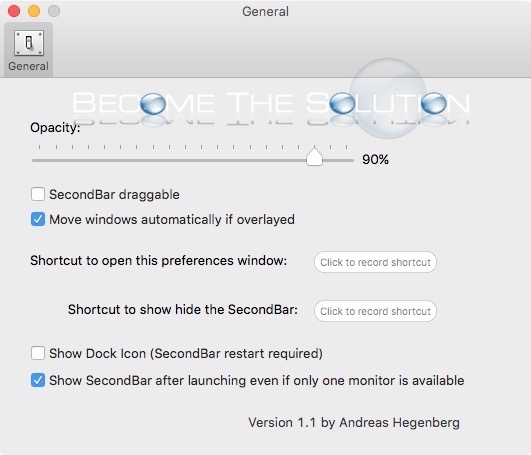Launching App From Terminal Mac
Mar 21, 2018 How to open Terminal on Mac. The Terminal app is in the Utilities folder in Applications. To open it, either open your Applications folder, then open Utilities and double-click on Terminal, or press Command - spacebar to launch Spotlight and type 'Terminal,' then double-click the search result. Open /Applications/Mail.app If you want to use AppleScript (osascript from command line), open app isn't quite equivalent. Instead, you can either use. Osascript -e 'tell application 'Mail' to activate'. Osascript -e 'tell application 'Mail' to launch' You can see this question for the difference between the two. Seriously, though: just use Homebrew. It’s a lot easier, and if you like using the Terminal, chance are you’ll come across it again in the future. How Update Software Without Launching the Mac App Store. The biggest use for this software, in my opinion, is installing updates. To see a list of apps that need updates, type mas outdated. Open./AppName.app -args -AppCommandLineArg But for older versions of Mac OS X, and because app bundles aren't designed to be passed command line arguments, the conventional mechanism is to use Apple Events for files like here for Cocoa apps or here for Carbon apps.
Terminal User Guide
Each window in Terminal represents an instance of a shell process. The window contains a prompt that indicates you can enter a command. The prompt you see depends on your Terminal and shell preferences, but it often includes the name of the host you’re logged in to, your current working folder, your user name, and a prompt symbol. For example, if a user named michael is using the default zsh shell, the prompt appears as:
The first thing to understand about Terminal is that it's just an application and it lives in the Utilities folder in Applications. You launch it like any other and when you do, you'll see Apple's.
This indicates that the user named michael is logged in to a computer named MacBook-Pro, and the current folder is his home folder, indicated by the tilde (~).

Open Terminal
On your Mac, do one of the following:
Click the Launchpad icon in the Dock, type Terminal in the search field, then click Terminal.
In the Finder , open the /Applications/Utilities folder, then double-click Terminal.
Quit Terminal
In the Terminal app on your Mac, choose Terminal > Quit Terminal.
Quit a shell session
In the Terminal app on your Mac, in the window running the shell process you want to quit, type
exit, then press Return.
This ensures that commands actively running in the shell are closed. If anything’s still in progress, a dialog appears.
If you want to change the shell exit behavior, see Change Profiles Shell preferences.
In some flavors of Unix, you feel as if you've been cast into an alternate universe when you open a terminal window and work on the command line. But with OS X and its Darwin core, there's often an elegant integration between the two. In this how-to I'll show you how to launch an OS X app from the command line with the open command.
[Note: A little bit of prior UNIX experience will be helpful here.]
First off, I will admit this technique is fairly geeky. In my [Mac] OS X career, I've only used this trick a handful of times. However, it's so darn cool and charming that one just aches to use it at any opportunity.
Actually, upon reflection, there are some useful scenarios for this technique.
- The Finder acts up, a terminal window is already open, and you'd like to be able to launch a GUI app that might help you diagnose the problem.
- You're a UNIX professional, live and breathe the command line, but you'd rather use a GUI text editor for coding instead of the raw and ugly vi or Emacs editors.
- You're writing, say, a Perl or Python script, for another user and, at some point in the script, you'd like to launch a GUI app that carries the workflow forward.
- You want to quickly run a utility with admin privileges without the restriction of the account you're logged into. See, for example, 'How to Find & Recover Missing Hard Drive Space.' In that case, you must bypass the open command and drill into the Package Contents to run the app with sudo and admin privileges. But I've digressed.
The Man Page
The terminal app is in the Utilities folder—which is found the Applications folder. Launch it now. The BSD UNIX command we'll be using is open. Below is the manual page ('man' for short), shown by typing:
I've printed most of the man page for the open command here for your perusal, but I'm not going to explore every argument. And feel free to jump right to the examples below to whet your appetite.
For this limited how-to, one interesting way to use the open command in this context is to use the [-a] option. Some other useful variations and arguments are in the examples below.
Typical Examples
Here are some short and sweet examples of the open command with the -a, -e, and -t arguments. They're easy to try. [If you don't have BBEdit installed, use any other favorite a text editor in /Applications.]
Open Doors
Open Terminal In Mac
These are just a few of the cool things you can do on the command line with the open command. To keep things simple, I haven't delved into creating a search path or other Unix tricks like aliases. All that's been left for you to explore on your own.
Mac Terminal Application
I think this is one of the neatest tricks in OS X.
__________________
Mac Terminal Window
Launch button via Shutterstock.